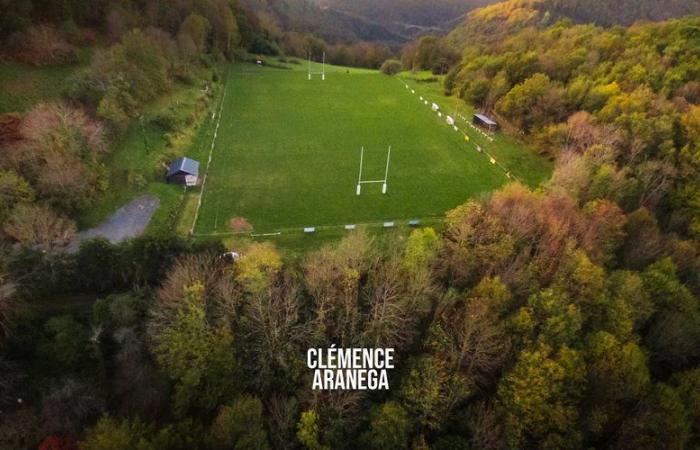the essential
Clemence Aranega, photographer from Castres, had the great idea one autumn Sunday to go immortalize a sunset on the heights of the Sidobre Montagne XV team's field, in the hamlet of Thérondel. The photo is a hit on social networks.
When she took to the road a few days ago, heading towards the hamlet of Thérondel in Vabre, Clémence Aranéga did not expect such a torrent of passion around her photo of the Rugby field. Good, “I still thought the photo was going to work: it’s a visual that we’re not used to seeing. But above all it’s nice to have testimonies from people “up there”,” rejoices the freelance photographer, who works in the communications department of the Occitanie Rugby League.
It was a Sunday. “There were beautiful autumn colors in the Sidobre, as we can still see them at the moment. I was in Castres, and I said to myself that it was the time to go up to Vabre. It was around 5:30 p.m. and I“I took the photo using a drone,” says the 30-year-old Castraise, who admits to having retouched it slightly. “I also made a video which I shared on Instagram. It has exceeded 16,000 views, it’s doing well too,” she smiles.
Former player of Sidobre MontagneCastres educational Olympic rugby). In a detailed and touching text, she recounts her “first time” in Thérondel: “About three years ago, I set foot for the first time on this isolated rugby field, hidden in a remote corner. I was immediately captivated by its unique character. This stadium, lost in the heart of Sidobre, looks like a “ground at the end of the world”.
“It was only after a walk of around 600 meters, on a small bitumen road lined with a few houses, that the landscape opened onto a green plain on the edge of the forest, offering an almost endless clear view where the horizon often merges with the clouds and there, I had this strange and intense feeling of being at the end of the world.
A name which will earn it a significant number of testimonies. “When you arrive it's fabulous, with the impression that time stands still. It's a Montagnols stadium, as they say. They are very proud of their pitch and its history.” And then there is this crossing which leads to the land, unique. “It was only after a walk of around 600 meters, on a small bitumen road lined with a few houses, that the landscape opened onto a green plain on the edge of the forest, offering an almost endless clear view where the horizon often merges with the clouds and there, I had this strange and intense feeling of being at the end of the world.
“This pitch, without modern artifice, seems timeless. The sidelines, sometimes imprecise, stretch over robust, slightly wild grass. On one side, a natural “grandstand”, perched on a rock, allows for spectators to dominate the field. On the other hand, granite benches serve as official stands. Here, rugby is rooted in the landscape; […] Basically, this “land at the end of the world” inspired me like few other places. In my lens, I find this particular emotion each time. Here, rugby is played in a way that seems to embrace nature itself, where each meeting, each match becomes an adventure in the great outdoors.” For this, a photo was needed to tell the story.






